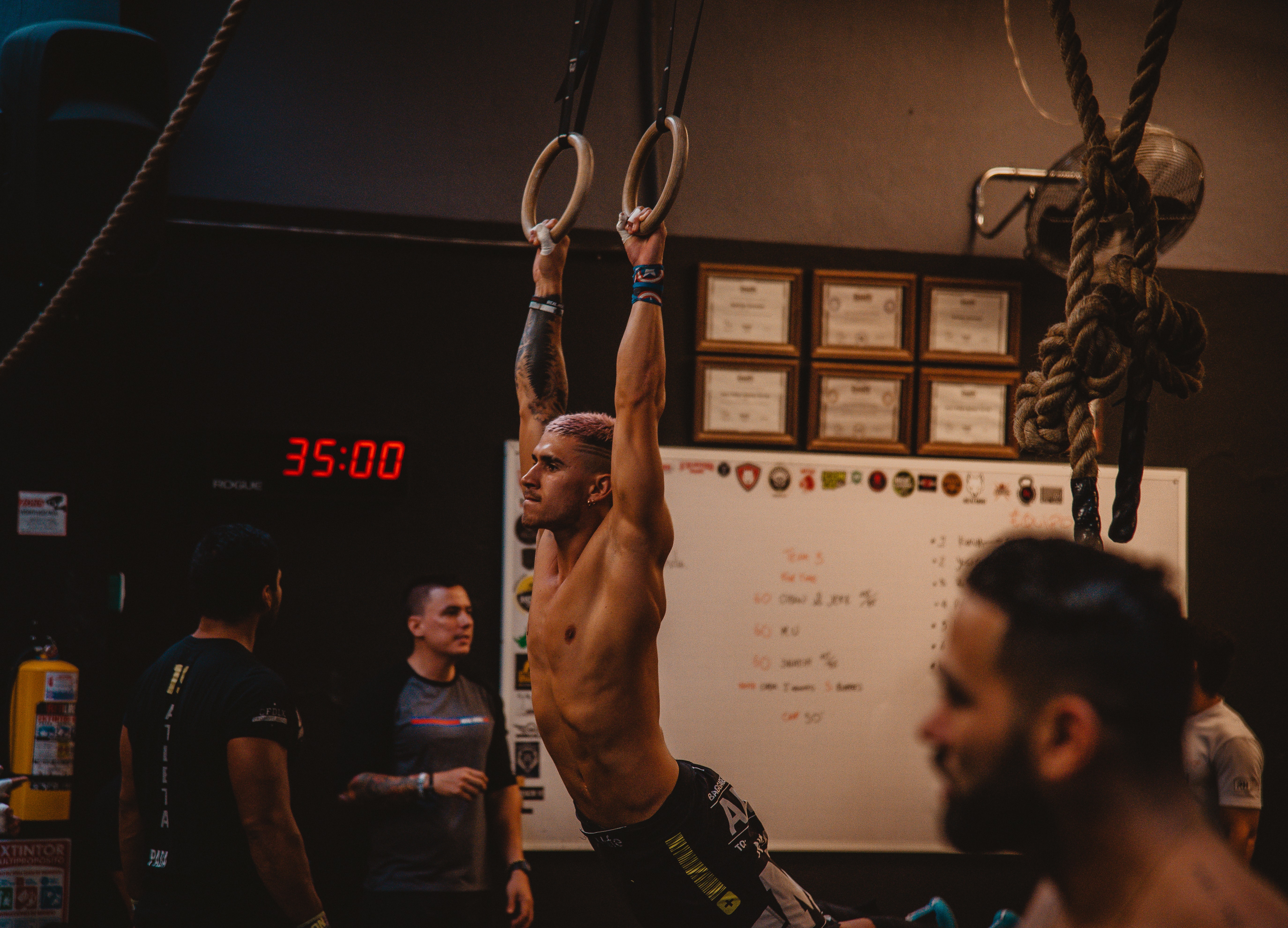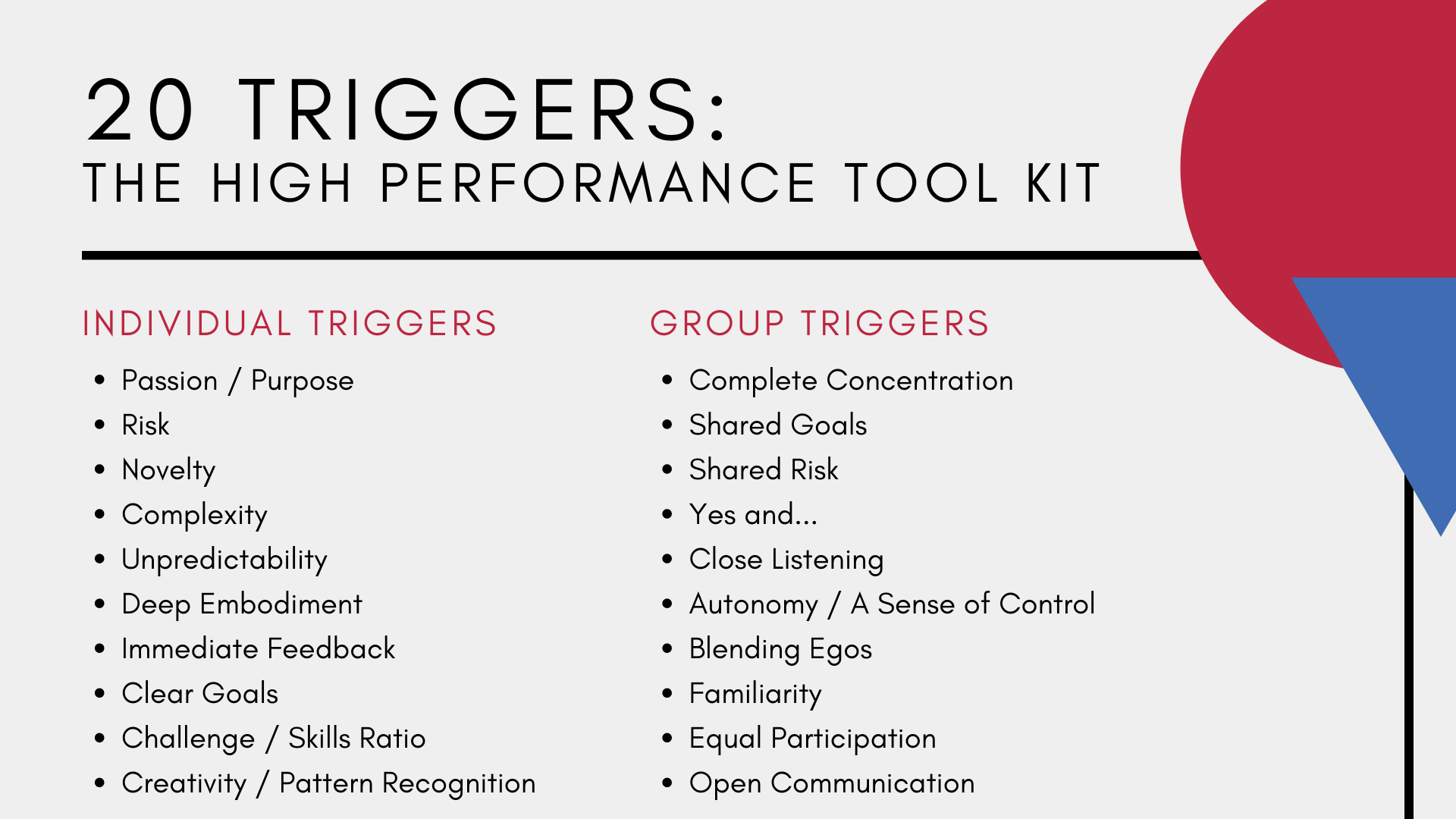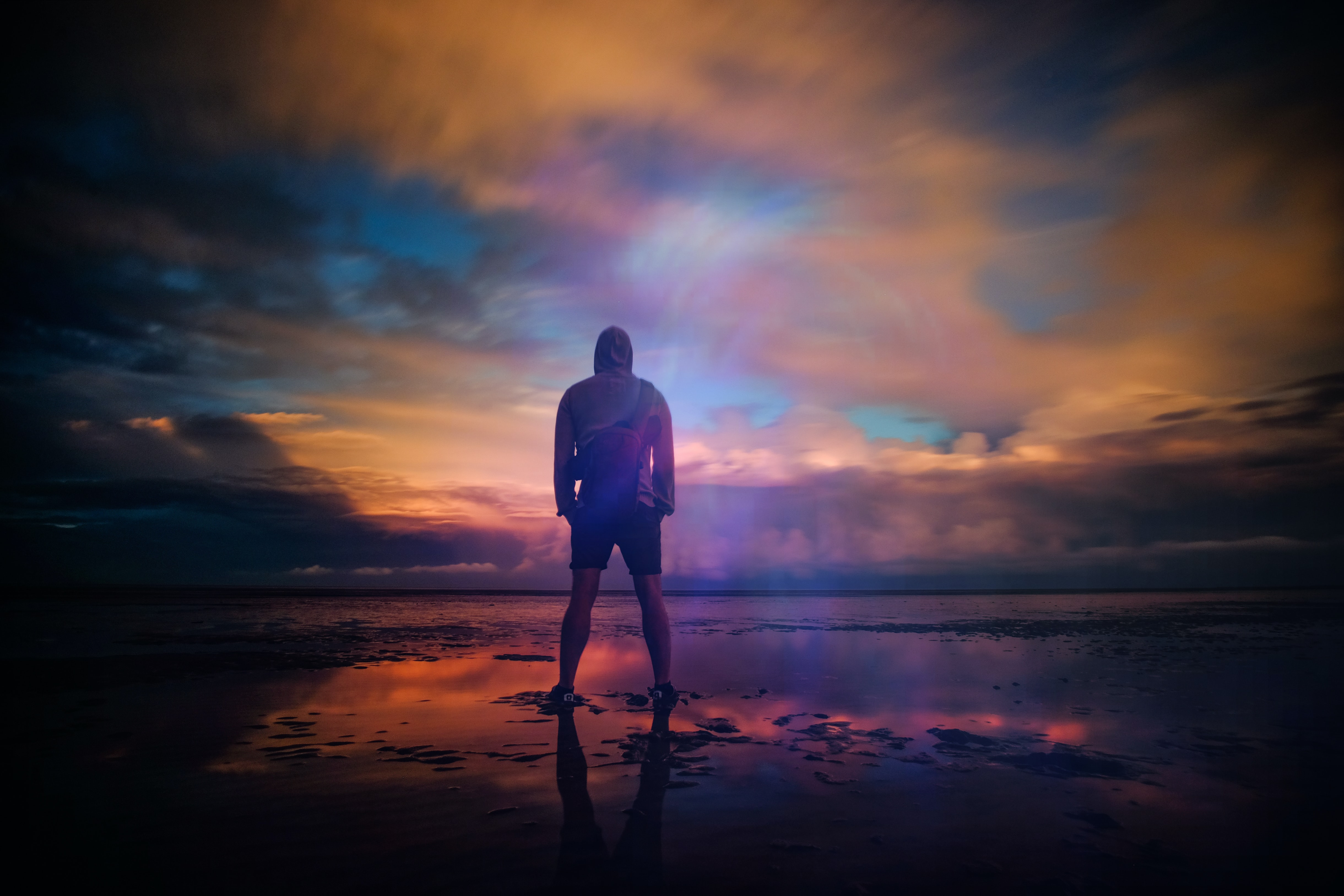The following is a five-minute rundown of Steven Kotler’s research and findings on the state of flow, which can be found in his book Flow: The Psychology of Optimal Experience. Let’s get right into it:
What is Flow?

“Flow” is an optimal state of consciousness in which we feel and perform our best. Feeling weightless on your feet while in a state of runners high, getting in the zone in a team huddle on the football field, and feeling fully immersed in a creative project where ideas flow freely are a few examples of being in a state of flow. While in a state of flow, we are so focused on the task at hand that everything around us disappears and time dilates. All aspects of physical and cognitive performance go through the roof.
Who Can Benefit from Flow?
Everybody.
According to Kotler’s findings, while in a state of flow, you can boost your productivity five-fold (500%). This boost in productivity can be applied to everything from breaking world records in extreme sports to completing a simple homework assignment. If you train yourself to optimize this state of flow, you can literally do more in one day than your average Joe does in a week.
How Does it Work?
I’m sure you’ve heard the common myth that at any given point in time we are only using 10% of our brains. Therefore, in a state of flow, the opposite must occur in which our brains are in overdrive to create superhuman focus, right?
Actually, the exact opposite is true. Most activities we embark upon throughout the day may seem simple, but there is a complex cognitive process happening behind the curtain. According to a Scientific American article titled Do People Only Use 10 Percent of Their Brains:
“Take the simple act of pouring coffee in the morning: In walking toward the coffeepot, reaching for it, pouring the brew into the mug, even leaving extra room for cream, the occipital and parietal lobes, motor sensory and sensory motor cortices, basal ganglia, cerebellum and frontal lobes all activate. A lightning storm of neuronal activity occurs almost across the entire brain in the time span of a few seconds.”
While in a state of flow, we are in a state of transient hypofrontality, which is a scientific way of saying that the prefrontal cortex of our brain temporarily powers down. This portion of our brain is responsible for handling complex operations, such as logical decisions, long-term planning, will, morality, and perception of time. In flow, the brain makes an “efficiency exchange” to power down the prefrontal cortex. That’s right… in flow, we are actually using less of the brain.
With the prefrontal cortex temporarily powered down, risk-taking and creativity go up significantly because we aren’t hindered by fear and anxiety, which stem from dwelling in the past or from fearing the future. The negative “what if” thinking fades away, time seems to slow (recall that perception of time is processed in the prefrontal cortex), and you are fully in the present moment; here and now. In flow, you have the freedom to perform optimally without mental limitation.
In exchange for the energy saved with the prefrontal cortex powered down, we experience a huge boost in signaling molecules, allowing the brain and body to exchange a high rate of information to communicate very efficiently. This results in amplified physical and cognitive performance, including strength increase, quicker response times, deadened pain, and improved concentration.
The High Performance Triangle

To further build on how flow helps us perform and achieve, Steven Kotler uses a model which he calls the “High Performance Triangle” to highlight the three primary elements required for success in our fast-paced world:
Motivation
Motivation is the starting point of any endeavor because we must feel a desire to move forward with an action. Flow breeds a massive boost in motivation. When we enter a state of flow, our bodies release pleasure chemicals (i.e. dopamine), which is why flow is considered to be one of the most addictive states on earth and the source code of intrinsic motivation.
Creativity
Creativity is arguably the most important skill to master in the 24th century and is an extremely critical element of success. The process of creativity is fairly simple – the brain absorbs information, connects that information to older ideas, and uses those connections to create something entirely new. Flow chemicals surround this process, allowing us to take in more information per second. While in this state, we process more efficiently, find information faster, and our pattern recognition improves. As a result, our “out of box” thinking goes up tremendously.
Learning
We live in a very fast pace world. To get ahead and create innovative ideas, we need to speed up our rate of learning. While in a state of flow, we have more neuro-chemicals that show up during the experience, improving the chances that the experience we immerse ourselves in and absorb will move from short-term holding to long-term storage in our brains.
Flow States are Hackable
You read that right… flow states can be “hacked” into and it’s a pretty simple process. Every person has triggers, or preconditions, that can drive them into a state of flow. For example, a musician can strum a few chords on the guitar while humming along to match the pitch with her voice to get into the rhythm for a performance. Another easy example is a writer picking up his laptop and changing his environment to feel inspired and trigger a state of flow for creative writing.
The “catch” here is that these triggers are entirely unique to each individual person and task, so you have to experiment and find these triggers for yourself. Keep in mind that flow follows focus and can only show up when we are fully immersed in the task in front of us, so focus your attention on identifying triggers that drive your attention into the now.
To help your search, Kotler identifies 20 total trigger categories to get us into a state of flow: 10 triggers for driving individual flow, and 10 for sparking group flow (i.e. church choir, team sports, etc.). They are as follows:

All 20 of these identified triggers drive attention into the “now,” and it’s important for us to recognize what each of these categories mean to us (if they mean anything at all). For example, passion is important because we pay more attention to the things we believe in, thus driving flow. Risk spikes adrenaline, which drives focus, which leads to flow. You get the idea.
A great example of achieving individual flow state comes from a 90-120 minute block of uninterrupted concentration, which is a foundational flow hack, tailed by deep embodiment, or learning by doing. In other words, don’t just learn about windmills; go out and build one to engage your eyes and senses, thus fully embodying the learning experience.
When it comes to group flow, Kotler talks about the “Yes, and…” trigger as perhaps the most potent for driving a group flow state. The simple definition is saying “yes” to an idea proposed by another group member and building on it further, adding ideas to compound group flow.
A great example to look at is Amazon, led by CEO Jeff Bezos, who fully utilizes this triggering method to drive flow. Bezos has institutionalized a “Yes Policy” at Amazon, which implicates that if you work for Amazon and say “no” to any proposed idea, you have to write a two-page paper and post it on the internal company website explaining why you said no. This is all in effort to promote the compounding effect of building on ideas and driving intense focus and flow within the firm.
The bottom line here is that flow state is learnable, hence why some businesses push employee flow as a fundamental component of company structure. We are hardwired for optimal performance, we just need to learn how to tap into our flow triggers to enter this state of improved performance.
What Can I Achieve by Utilizing Flow State Hacks?
Just about anything that you can conceive in your mind.
For context, let’s take a quick look at British athlete Roger Bannister, the first man to run a sub-four-minute mile. 3:59.4 seconds was the exact time set by Bannister. Jaws were on the floor and this made headline news because, at the time, it was considered an absolute impossibility. Doctors didn’t think it was physically possible. Many attempted to beat the 4-minute mark throughout the course of decades leading up to Bannister’s feat but failed. In fact, the mile time dropped a mere 0.25 seconds per decade for 60-70 years leading up to Roger Bannister’s historical run, but nobody could scrape the 4-minute mark.
Here is the crazy thing… after Roger Bannister ran the world-famous four-minute mile, his record was broken just one month later. A few months later, yet another new world record was set. What happened? The physical challenge didn’t change. The only thing that changed was the mental frame we built around the task. What used to be impossible suddenly became possible, and the possible became realistically achievable. This phenomenon is now called The Bannister Effect.
What this experience taught us is that there is an incredibly tight bond between mind and body. We need to believe the impossible is possible before we can achieve the impossible.
“If you consistently use flow to do the impossible, you get confident in your ability to do the impossible. You begin to expect it. That’s why we’re seeing so much progression in action sports today. It’s the natural result of a whole lot of people starting to expect the impossible.”
Travis Pastrana
This about sums up the key pieces of information that I took away from Steven Kotler’s findings. In the words of Steven himself:
“What you choose to do with this information is entirely up to you.”


